Good day, good reader! How are you doing?
We are now six weeks into the COVID-19 statewide lockdown in California and, from what I can see from the news and social media, it appears that we are all in the same situation: working at home, doing yoga in our pyjamas, and trying to find ways to stay sane while our social lives, our work, and freedom of movement have been severely limited. For some of us, this transition has been manageable, but for others it’s been a very difficult time rife with anxiety, stress, and economic worries. Regardless of how we are affected by this unusual time individually, there are some deeper messages coming out of all of this above and beyond simply having to isolate ourselves for a short period of time to control the spread of COVID-19.
Six weeks ago, I posted a video recipe to Youtube in response to consumers deciding that vast amounts of flour (and toilet paper) would be required to successfully survive the global Coronavirus quarantines. At this early point in the pandemic, many of us thus collectively learned how to make due with the bits and bobs that we had in our pantries and how to get creative with it, just like our grandparents did during the Wars and Great Depression. On April 10, Julio Vincent Gambuto penned a piece for Medium coining the term ‘The Great Pause’ to describe the time that we are in RIGHT NOW as an opportunity for us to take a good long look at ourselves, our choices, and the lives that we are ‘leading’. At this point in the quarantines, the new ‘normal’ has set in and something else is emerging from this tragedy: clarity. So much has come into view during the last six weeks: the smog is gone in Los Angeles because traffic is less; nature is taking up its rightful space one again in the absence of pervasive human occupation, and animal shelters in Los Angeles have been EMPTIED because many people are working at home and can now adopt and adequately take care of a homeless or abandoned dog or cat. Air pollution, greenhouse gas emissions, traffic accidents, road rage, hours of commuting, and the mass daily euthanization of cats and dogs stopped in Los Angeles because people starting working from home. Meditate on that for a moment. What a silver lining this is! You see, this isn’t just a quarantine that we’re doing here, folks, this is an opportunity for us to slam on the brakes, take the wheel back, change gears, and alter our course.
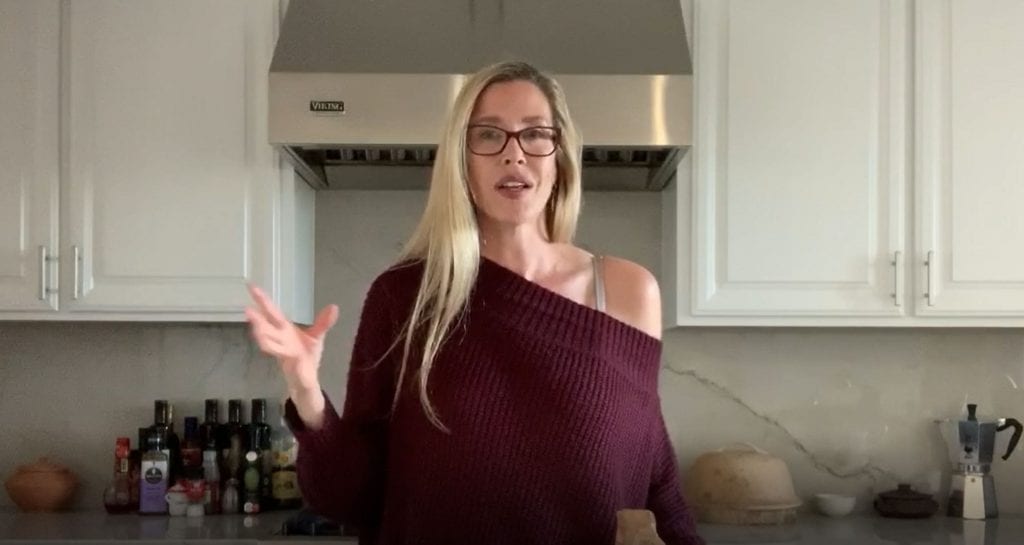
During the past six weeks under lockdown, I have looked at the ‘Great Pause’ as a welcome opportunity to bake myself into oblivion and retreat into my office to catch up on a lot of writing that had been deprioritized and lost in the shuffle while I was busy working, studying, taking care of my home and family, growing my business, organizing speaking events and master classes, and helping those around me who were in need. In addition to catching up on writing, I have also given myself permission to slam on the brakes, disconnect from my iPhone, sit still in peace… and READ A BOOK. A What?!!! No! Yes… A book. But not just any old book, because I read textbooks and papers all the live long day. Rather, I gave myself permission to put the kettle on, wrap myself in a blanket, and read a fiction novel. This week, I am reading Crystal King’s latest novel, ‘The Chef’s Secret’.
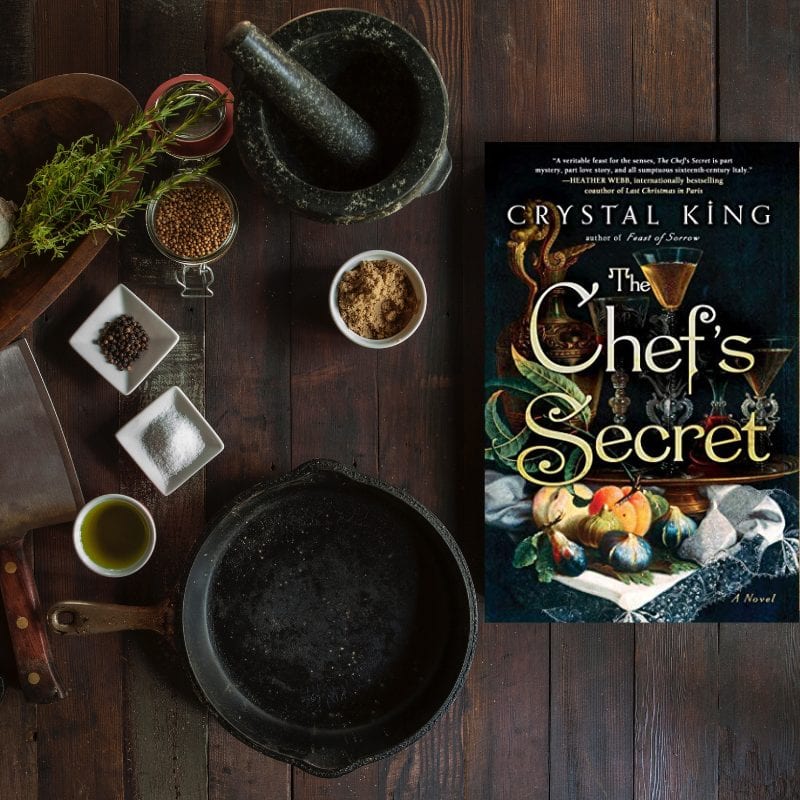
Now, first things first: this recipe post isn’t sponsored, trust me. I turn down sponsored posts and advertising offers weekly because I refuse to insult my readers or turn my page into a click-bait purgatory. I created this recipe post for several reasons: I like to support other genuine and hard-working women who create original content that inspires others to explore culinary history and archaeology; The Chef’s Secret is a fiction novel that speaks to me and my interests: Italy, food and history; and the story made me dig deeper into some of the recipes of the pope’s ‘Secret Chef’ himself: Bartolomeo Scappi. We’ll get to one of Scappi’s more unusual recipes in just a few paragraphs, but before we do, it’ll help to have some historical context:
Crystal King’s The Chef’s Secret is a fictional retelling of the life of Bartolomeo Scappi, a chef who lived in sixteenth century Rome. When his cookbook, L‘Opera dell’arte del cucinare, was published in 1570, it became the world’s best-selling cookbook for the next two hundred years.
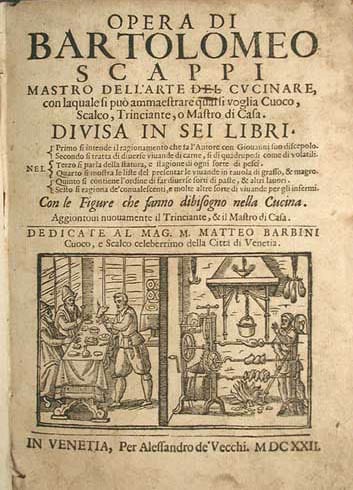

Bartolomeo Scappi was born in 1500 AD in a town called Dumenza, in Lombardy, an area of Italy which was recently hit hard by the Coronavirus. He served in the Vatican kitchens under Pope Pius IV and Pope Pius V and is often touted as being the world’s first celebrity chef.
Scappi published his magnum opus, a cookbook titled: ‘Opera dell’arte del cucinare‘, seven years before his death in 1577 AD and the book features almost 1000 recipes that permit a glimpse into food and food preparation techniques in Renaissance Italy. Of further interest, to chefs, archaeologists and historians, are illustrations within L’Opera detailing kitchen layout, use of space, implements, techniques and technologies that were in use during the time. So with this environment in mind, let’s look at today’s recipe and create something that Scappi himself would have made in a kitchen such as the one we see below.
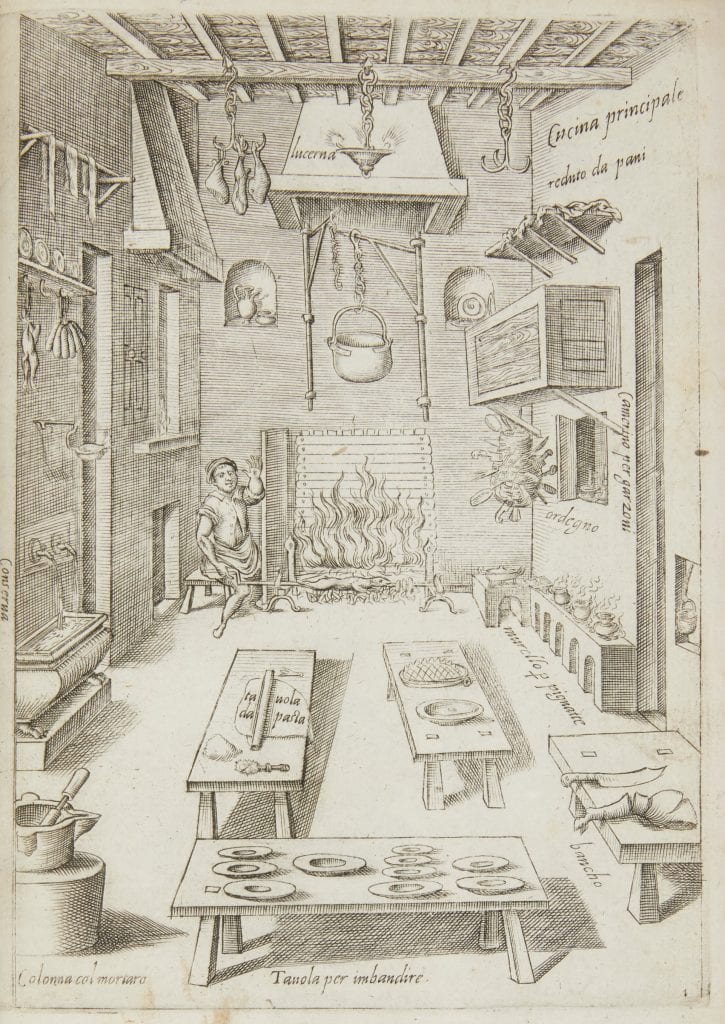

The Old School Kitchen: Scappi’s Chickpea and Chestnut Zeppolle
What initially drew me to Scappi’s recipe for zeppolle was two things: It contains no flour, which is a godsend for those of us who are living off of nut flours right now; and it is another clear example of culinary continuity on the Italian peninsula. I have written on this subject before as it makes me leap for joy when I see a modern food item represented in the archaeological or historical records in the same region. Scappi’s Renaissance zeppolle could very well have evolved from Cato the Elder’s Globi, a deep-fried fritter that was made in Republican Rome 1,700 years before Scappi’s zeppolle. Cato’s globi recipe called for flour but Scappi’s zeppolle do not; they feature chickpeas and chestnuts as the main component of the recipe. I wonder why that is? Details like this are important when studying recipes of the past. Flour wasn’t as dear or expensive in the Renaissance as it was in Ancient Rome. In both periods, however, it was the staple carbohydrate of the peasant and workingman’s diet. As Crystal states, ‘food was a major differentiator between the nobility and the peasant classes’. The fact that sugar is one of the ingredients in this recipe is indicative of the fact that the Popes ate well, as sugar was a new commodity imported from the new world. Perhaps the Popes wanted more exclusive ingredients in their sweets than those which were readily available to the poor? Or….. Perhaps Scappi himself suffered extended home quarantines without flour (and toilet paper), given the frequency of disease and famine in Renaissance Europe? We’ll never know for certain but I am grateful to the man for this delicious, flourless recipe that we can all make under quarantine without having to rob our neighbours of what little flour they may have left themselves. So let’s get rolling! Here’s what you’re going to need:
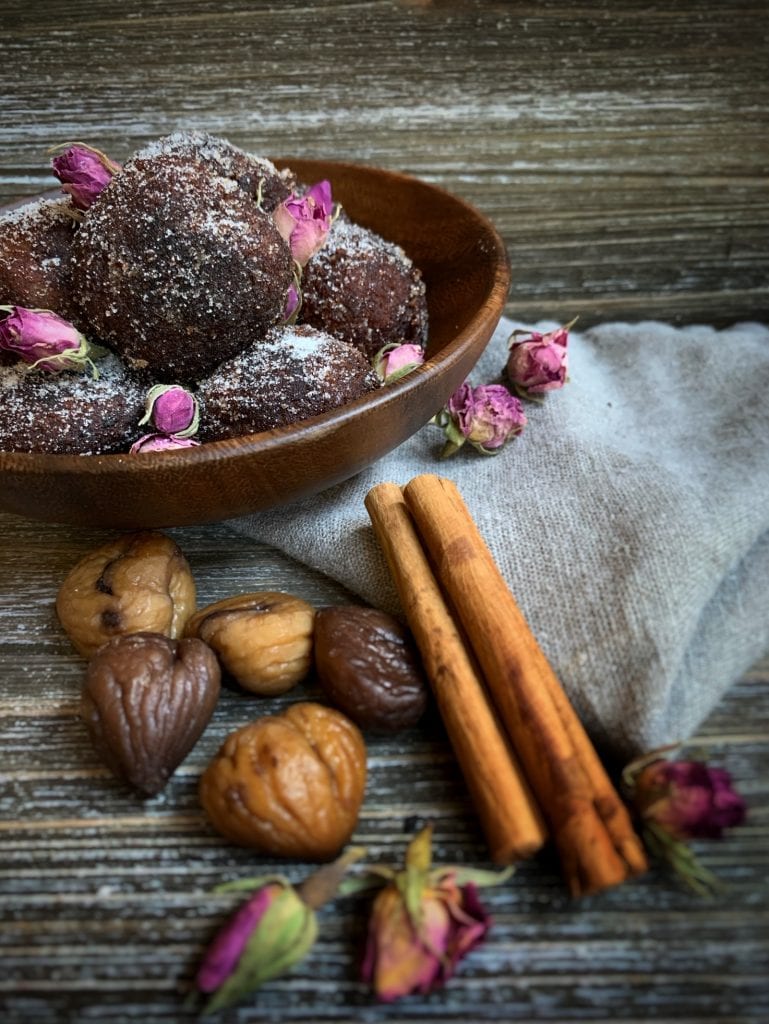

Ingredients:
- 1 lb chickpeas (dry) / 6 cups cooked or canned chickpeas
- Unsalted beef broth
- 6 oz unsalted chestnuts (or cashews if chestnuts cannot be sourced)
- 6 oz unsalted shelled walnuts
- 2 1/2 oz (10 tsp) sugar
- 1 tsp cinnamon
- 1/2 tsp ground cloves
- 6 egg whites
- rose water
- 1/2 tsp mint
- 1/2 tsp marjoram
- 1/2 tsp thyme
- 1/2 tsp edible burnet (if available)
- 2 lbs lard or unsalted butter (or cooking oil)
- Combine 1 tsp cinnamon and 1 1/2 tsp sugar on reserve for dusting
“To prepare fritters, popularly called zeppolle by Romans. Get one pound of brown chickpeas that have steeped; when their outer skin is removed, boil them in a good meat broth with six ounces of shelled chestnuts. Then take them out of the broth, drain them and grind them in a mortar with six ounces of old shelled walnuts that are not rancid, adding in four ounces of sugar, an ounce of cinnamon and half an ounce of cloves and nutmeg together. Then have ready an ounce and a half of leaven that has been moistened with a beaker of warm white wine and a little rosewater; mix everything together, adding in mint, marjoram, burnet and wild thyme–all beaten with knives. Make balls of that mixture and fry them in rendered fat or butter. When they are done, brush them with rosewater. Serve them hot, dressed with sugar and cinnamon. If, though, after the mixture has been made up it sits for an hour, covered, in a warm place, it will be quite a bit better because of the leaven. And if you do not have any leaven, instead of it you can use six egg whites.”
The Opera of Bartolomeo Scappi (1570): L’arte et prudenza d’un maestro cuoco (The Art and Craft of a Master Cook) (Lorenzo Da Ponte Italian Library) by Terence Scully
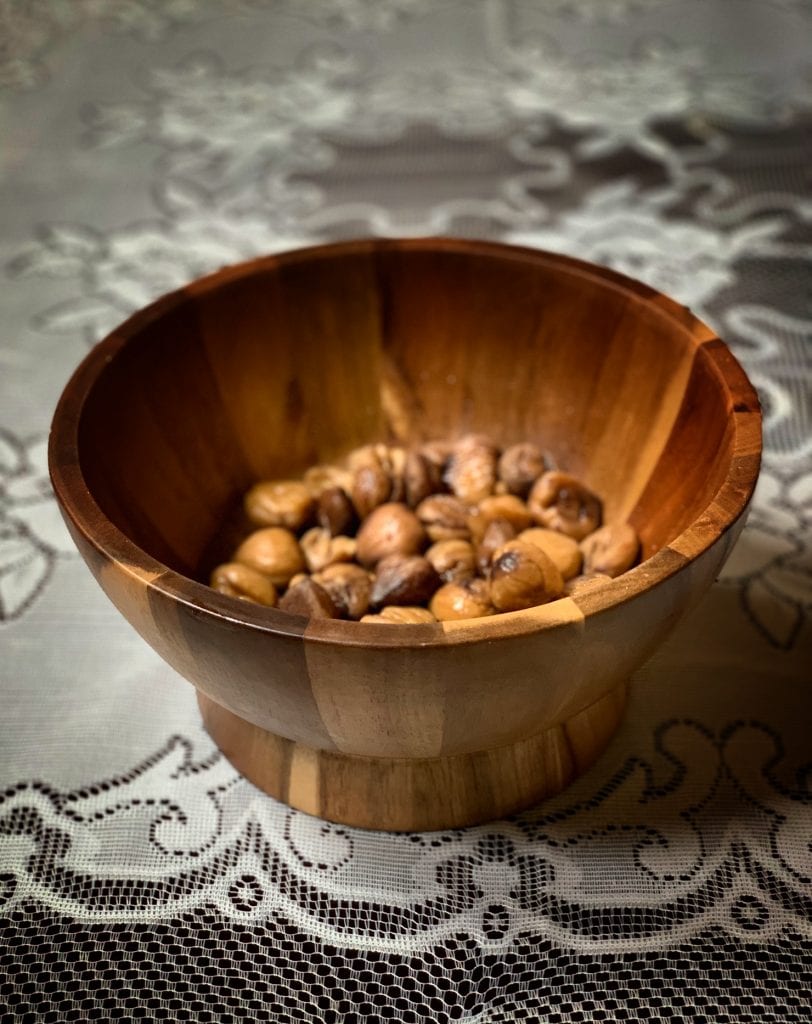

Preparation:
I made two attempts at making this recipe and the first one failed miserably as I chose to use the leaven as the binder and not the eggs. The zeppolle simply disintegrated during the frying process with this method. On the second attempt, I used the egg whites, as suggested by Scappi, and divided the sugar quantity between a volume in the actual zeppolle meal and a volume used to dust the zeppolle afterwards. Note that I have adjusted the ingredients listed above accordingly. Also, if you cannot find chestnuts right now, do not panic! Simply use another softer nut variety such as cashews.
Before you start preparation, begin by reading Scappi’s instructions thoroughly. Remember that this isn’t just the recreation of a Renaissance recipe for you to make and post on your Instagram feed, this is an exercise in experimentation and understanding the processes of food preparation as documented by someone who lived in Rome 500 years ago. Explore the use of ingredients, the writing, the tools. Try to put yourself into Scappi’s shoes when you’re working. Use your nose and taste buds as well… make note of the aromata as they’re not common to what we smell in our modern kitchens today. It’s also important to note that the Romans didn’t called fried fritters ‘zeppolle‘; this is an Italian word (zeppole/zippole from the Sardinian ‘tzípulas‘) that is still in use today to describe what English speakers would call ‘doughnuts’ or ‘fritters’. The Romans called them globi or dulcia. I like to think that Scappi’s choice of wording demonstrates a similar dynamic that we sometimes see in play in modern culinary culture as well: endowing a recipe with a loosely based (or inaccurate) historical origin in order to glorify it and give it more appeal. These little beauties do not require verbal glorification, though, as they stand well enough on their own as a delicious, comforting, and easy to make treat. So let’s get started!
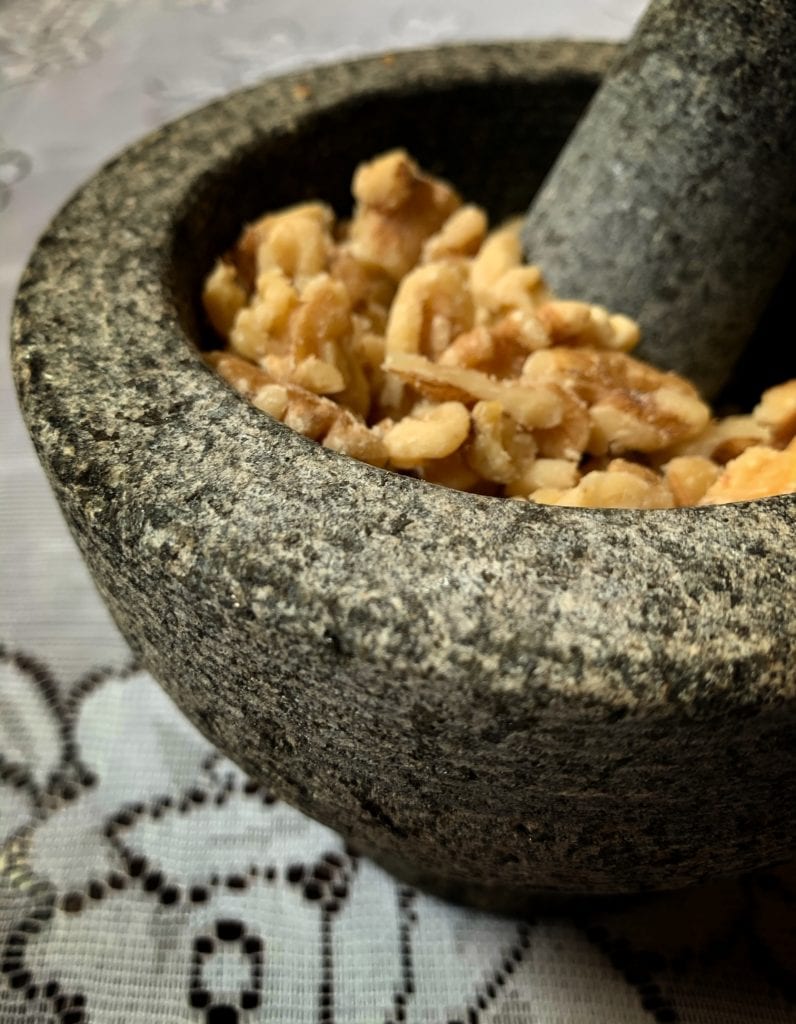

Preparing the mix:
- Begin by soaking your chickpeas for 24 hours. If you choose to use canned chickpeas, skip the soaking! Combine the beef broth and chickpeas and bring them to a low boil for 30 minutes.
- Strain and let the chickpeas cool. After boiling, the beef broth is not used further in this recipe.
- Mash the chickpeas in a mortar or a mixer. Place the mash in a large mixing bowl.
- In a mortar or mixer, mash the chestnuts and walnuts. Place the mash in the large mixing bowl with the chickpea mash.
- Place fresh or dried herbs and cloves in a mortar and pulverize them.
- In another bowl, combine the herbs, spices and rose water with 6 egg whites and whisk it together.
- Fold the egg white and herb mixture into the chickpea and nut mash until a stable mixture is formed. If your mixture is too wet, add some almond flour or more pulverized nuts to the mixture. It shouldn’t be too wet or it will make frying the individual zeppolle difficult.
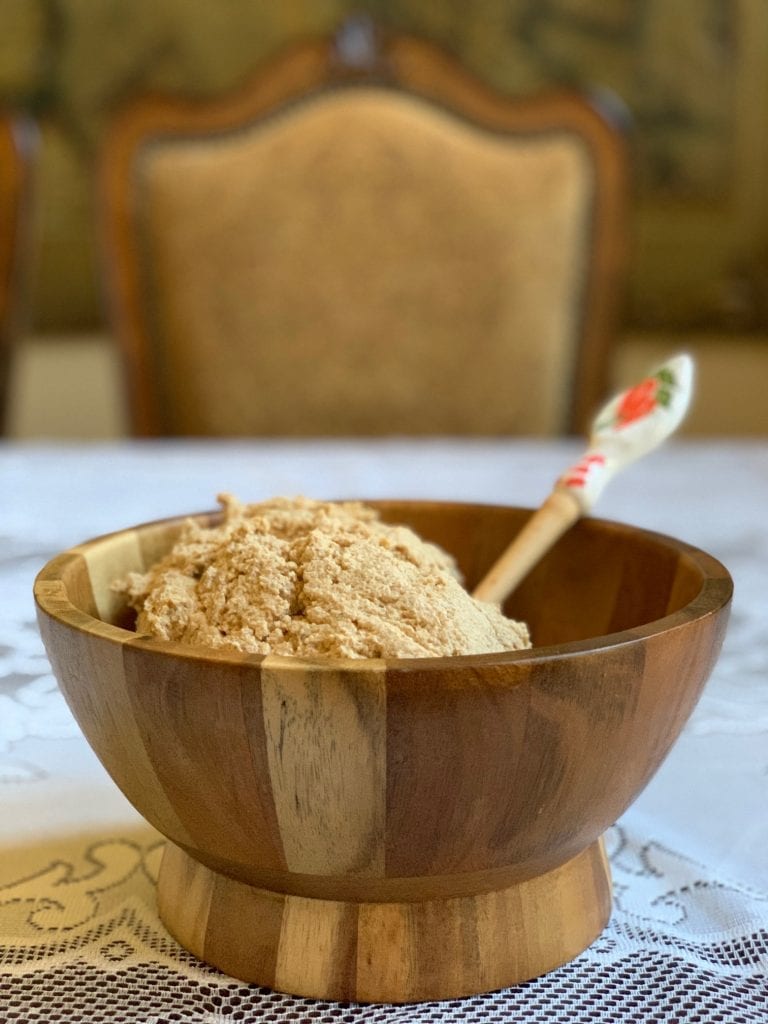

Frying the Zeppolle
- Place lard, unsalted butter, or cooking oil in pot or deep pan. Bring it to medium high. The heat is important as oil that is too hot will cook the exterior faster than the interior and oil that is not hot enough may cause the zeppolle to fall apart.
- Using a tablespoon or a small ice cream scoop, section off individual balls of the mixture, shape them a bit in your palm, and submerge them gently into the oil using a sieve spoon.
- Let each ball brown nicely, rotating them in the oil so that they’re cooked and browned evenly.
- Remove each zeppolle and let them cool on a clean tea towel or a paper towel.
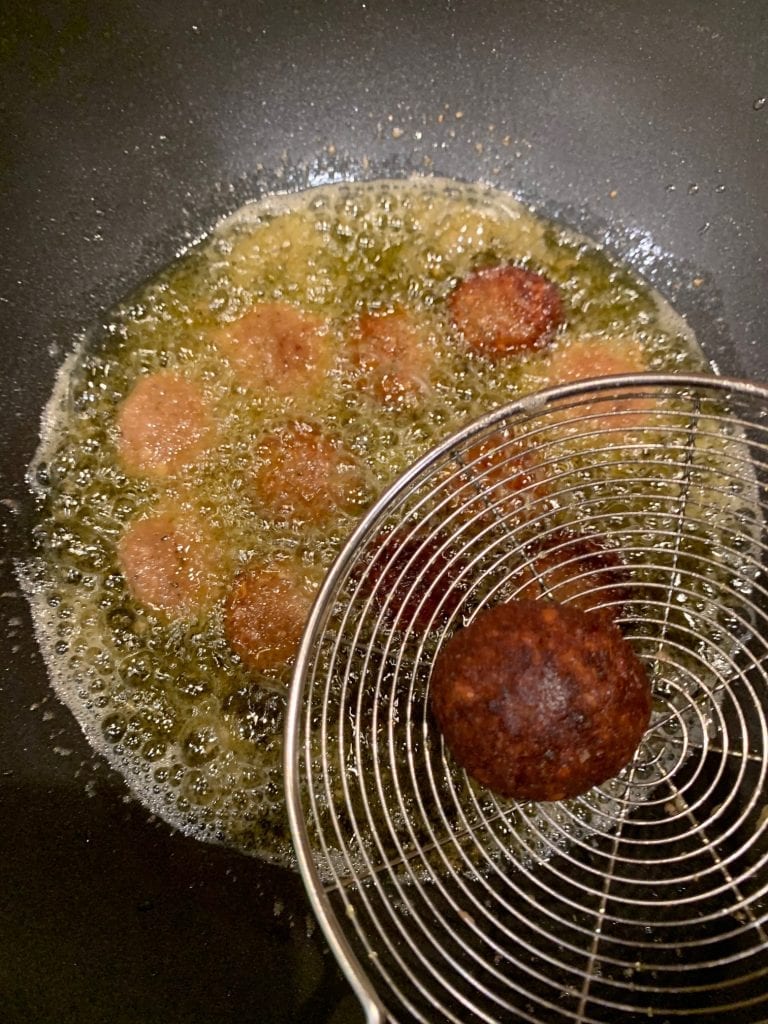

Dusting the finished Zeppolle
- Once the zeppolle have cooled enough to handle them, place them into a large mixing bowl and sprinkle a small amount (no more than 1/2 tsp) of rose water onto them.
- Dust the zeppolle gently with the reserve sugar and cinnamon and toss or rotate the zeppolle gently to distribute the sugar and cinnamon throughout.
- Garnish with rose petals or dried roses and serve!
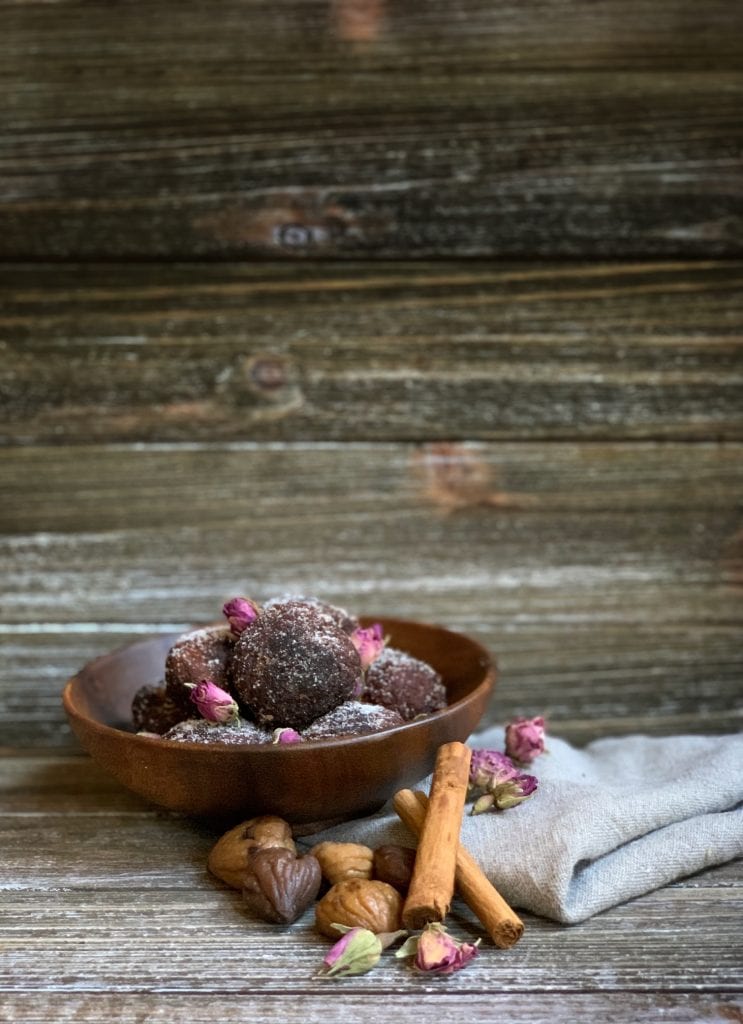

I was pleasantly surprised when I first tasted Scappi’s zeppolle. They’re not light, spongy or fluffy like doughnut-holes or Tim-bits would be, rather they are crunchy, wholesome and nutty almost like a small falafel but sweeter. The cinnamon, sugar, and rose water together balances the nutty flavour with warmth, sweetness and a tiny hint of flora that gives these sweet treats a flavour character that is both exotic and comforting. You must remember as well that at this time in Italian history, sugar was a new commodity from the new world so foods that incorporated it would have been quite the treat indeed! All of this makes me even more excited to snack on these zeppolle while curled up in my reading chair, tucking in to another chapter of The Chef’s Secret!
So go on and give Scappi’s zeppolle a whirl, good reader. You won’t be disappointed. I know that we’re all going through a pretty strange time right now and we’re focussed on getting through this pandemic safely, watching out for our parents and children, pinching our pennies and waiting with bated breath for the day that the world opens up again. But before that happens, let’s make sure we remember these moments. Record them in our memories. Let’s look for the silver linings in the moments of clarity and fight to keep them. As troubling and frightening as this time is, let’s remember to find some peace and joy throughout all of it. Remember to take some time to:
Disconnect.
Shut your phone off.
Turn the TV off.
Say ‘No’.
Knit.
Make art.
Bake bread.
Step outside.
Weed the garden.
Make meals from scratch.
Put something off until tomorrow.
Listen to music lying down with your eyes closed.
Take a nap on your balcony or porch.
Eat whatever makes you happy.
Sit in silence.
Adopt a dog.
Adopt a cat.
Adopt another dog.
Listen to the birds.
Swaddle yourself in a blanket.
And read a good book….
…because life is too short and too precious not to do so.



Crystal King’s latest release, The Chef’s Secret, is available for purchase on Amazon. Read it today!
Join in the discussion on our Facebook page or leave a comment about this recipe below on this page. If you’d like to chat in person with me or about any of the other recipes, you can join me at one of the The Old-School Kitchen live events taking place at a museum or venue near you. More information about this year’s events can now be found on the Events Calendar page.



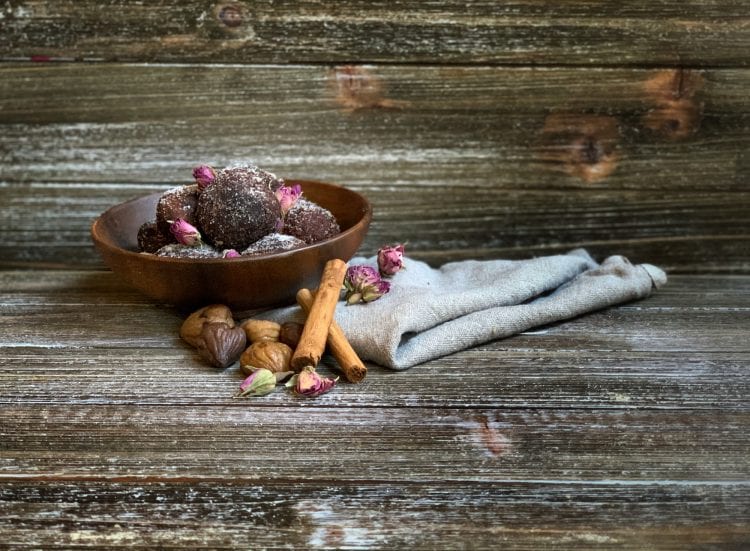
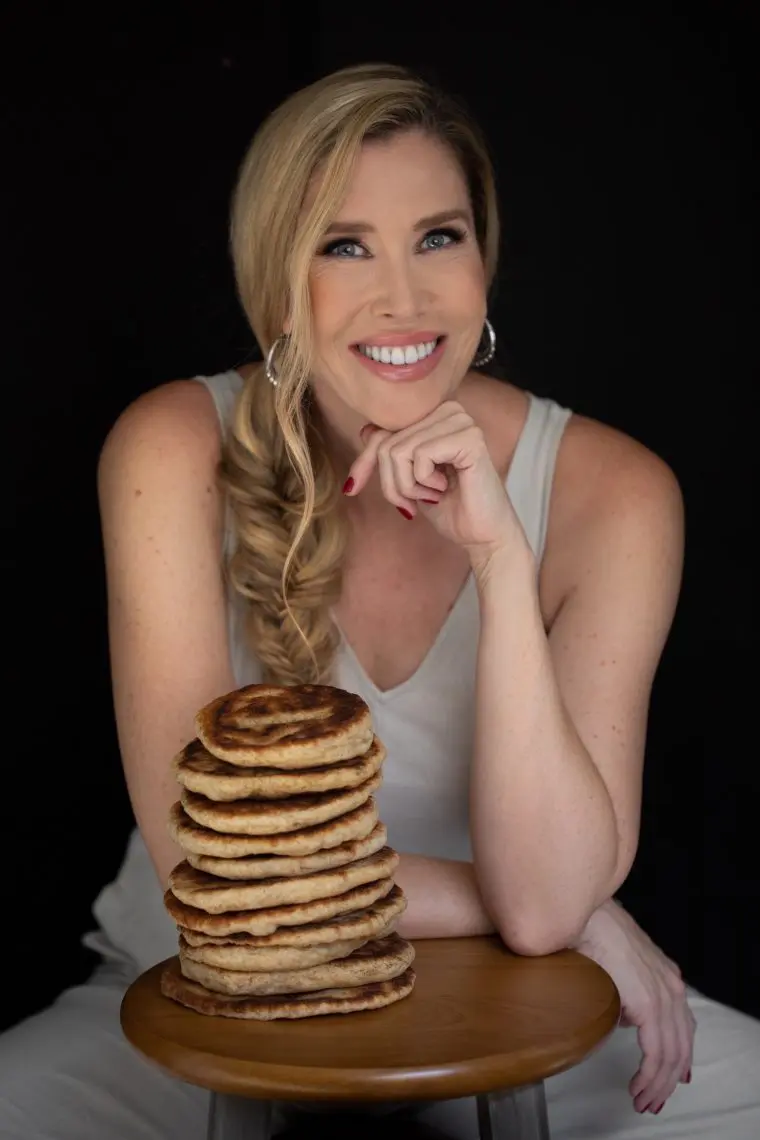





Fascinating story!
Thank you!